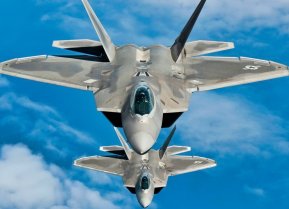Nakajima Kikka: Japan's Big Plan for a Fast World War II Fighter Jet
The destruction of Hiroshima overshadowed the next day's event – the first flight of the Nakajima Kikka ("Orange Blossom"), the Empire of Japan's first jet aircraft. It was developed so late in the war that it was also the combat aircraft's only flight before the conflict ended.
Meet the Nakajima Kikka, Japan's Jet Fighter: On August 6, 1945, the United States Army Air Force B-29 bomber "Enola Gay" dropped a five-ton atomic bomb over the Japanese city of Hiroshima. It had a blast equivalent to the power of 15,000 tons of TNT and reduced four square miles of the city to ruins and immediately killed some 80,000 people.
The destruction of Hiroshima overshadowed the next day's event – the first flight of the Nakajima Kikka ("Orange Blossom"), the Empire of Japan's first jet aircraft. It was developed so late in the war that it was also the combat aircraft's only flight before the conflict ended.
Also known as K koku Nig Heiki ("Imperial Weapon No. 2"), the aircraft was developed as a ground attack and anti-ship aircraft. It was not entirely a "new" design, rather it was based on the Messerschmitt Me 262 "Schwalbe" jet-powered fighter that was developed by Nazi Germany. As a result, it has earned the distinction of being the Japanese Me 262.
In 1942, the Japanese air attaché to Germany witnessed a number of the flight trials of the Me 262, and his report was so enthusiastic that Imperial Japanese Navy officials soon directed the Nakajima firm to begin the development of an aircraft-based on the German designs.
Nakajima leadership assigned the project to engineers Kazuo Ohno and Kenichi Matsumura. A number of parameters were set, including that the aircraft have a maximum speed of 430+ miles per hour, an operational range of no less than 125 miles, and that it could carry a 1,100-pound bomb. Such a project would have been ambitious for Japan in peacetime, but the call to develop the Me 262 as a fighter and fighter-bomber made it especially daunting.
Other specifications went beyond what Germany had developed, and that included it being equipped with two rocket boosters to supplement the power of the standard twin turbojet engines, and for it to have wings that could fold on a hinged section so that it could be stored in fortified tunnels.
Nakajima Kikka: What Could Have Been?
In a cruel twist of fate for the Japanese, on May 15, 1945, the German U-Boat U-234 was intercepted by the Allies. It was the largest type of German submarine ever constructed and it was carrying more than 300 tons of cargo destined for Japan including a number of aircraft parts, a Henschel HS-293 glider bomb, and notably 6,615 pounds of technical material including drawings of ME 163 and ME 262 aircraft, as well as the plans for the building of aircraft factories.
The submarine had departed the port of Kiel in Germany on April 15 – just three weeks before Nazi Germany surrendered – but it never made it.
That left quite a gap in the paperwork that Japan had previously received, and engineers were forced to work from an incomplete set of blueprints. The project continued, and had to overcome a number of issues – most notably the engine to power the new aircraft. Three different engines were tried before the designers finally settled on the Ne-20, which drew heavily from the German BMW 003.
Work progressed, and the aircraft was finally ready for testing. It resembled the Me 262 but was noticeably smaller and even more convention in design. It had straight wings instead of the German aircraft's swept wings, while its main landing gear was modified from a Mitsubishi A6M "Zero" and its nose wheel from the tail of a Yokosuka P1Y bomber.
The war ended before any other progress was made. Reportedly around ten prototypes were in various stages of construction, and a number of the airframes were brought to the United States for study. Two examples are now in the collection of the National Air and Space Museum in Washington, D.C. One of those had been taken to Patuxent River Naval Air Base, Maryland for study; while the second is believed to have been designed for load testing, not actual flight studies.
What impact the aircraft would have had remains one of debate. As with Germany's own "wonder weapons," the Kikka was really too late to make much difference, but it remains a fascinating story of the lengths the designers went in trying to change the outcome of World War II.
About the Author:
Peter Suciu is a Michigan-based writer who has contributed to more than four dozen magazines, newspapers and websites. He regularly writes about military hardware, and is the author of several books on military headgear including A Gallery of Military Headdress, which is available on Amazon.com. Peter is also a Contributing Writer for Forbes.


